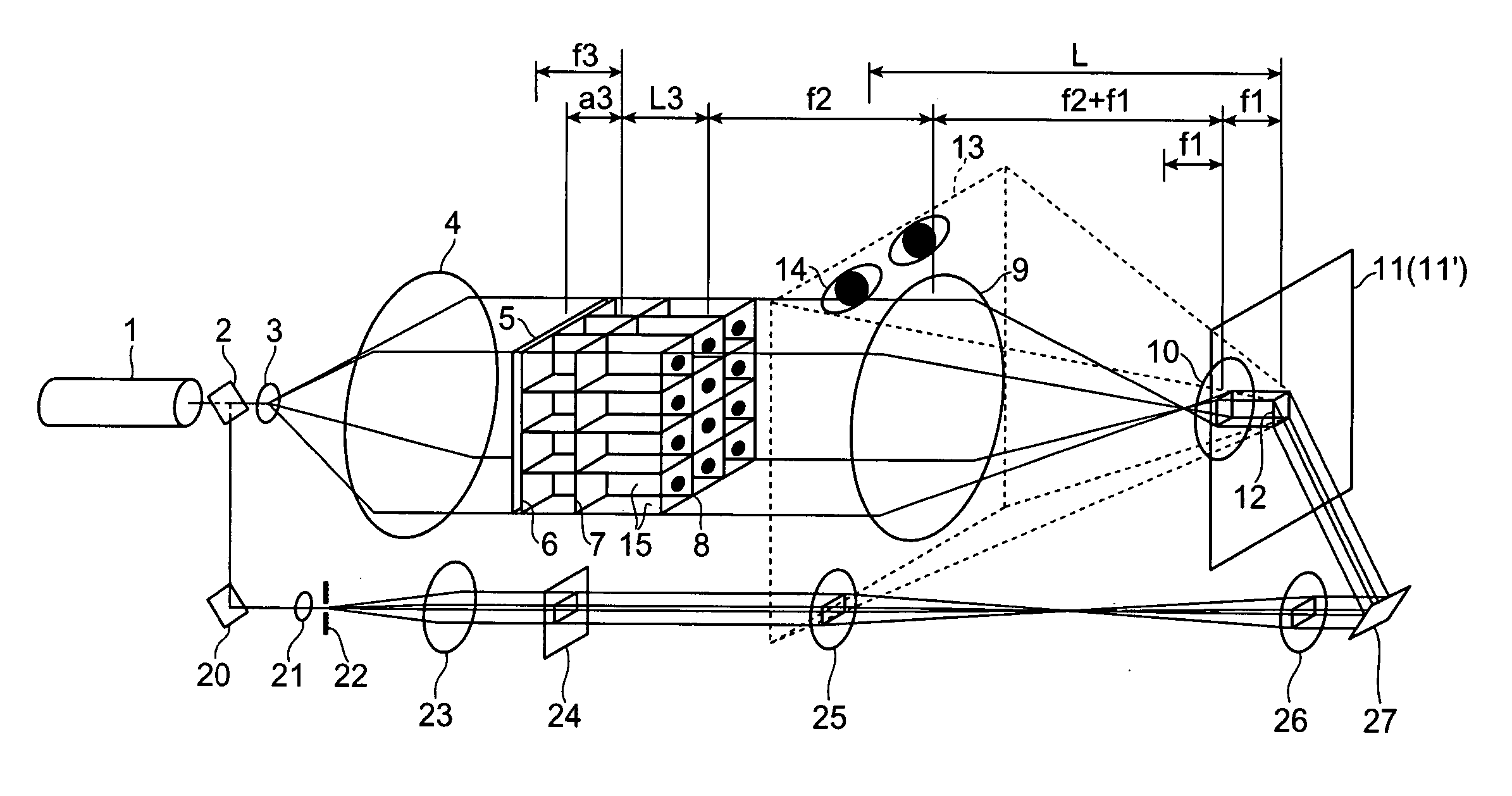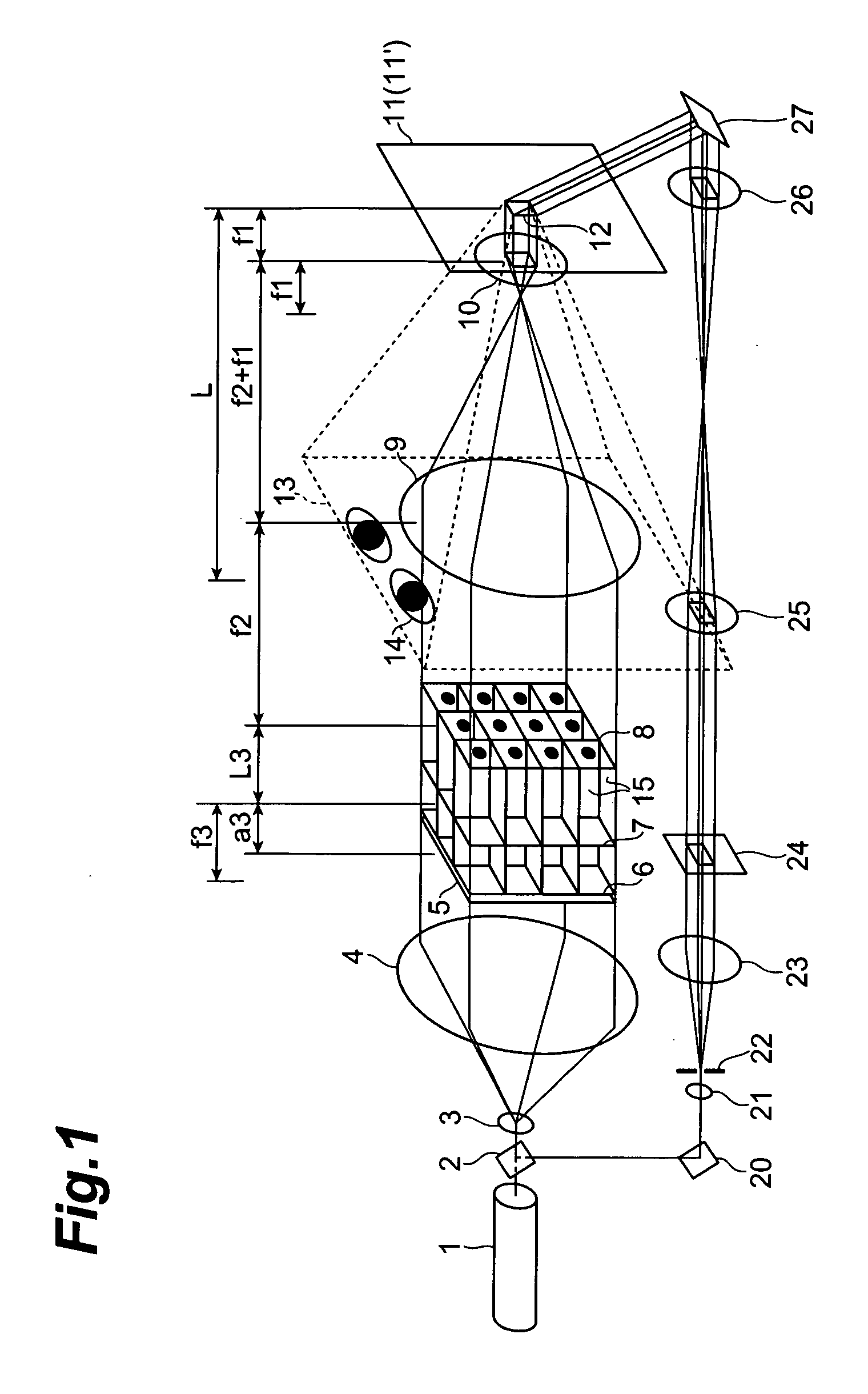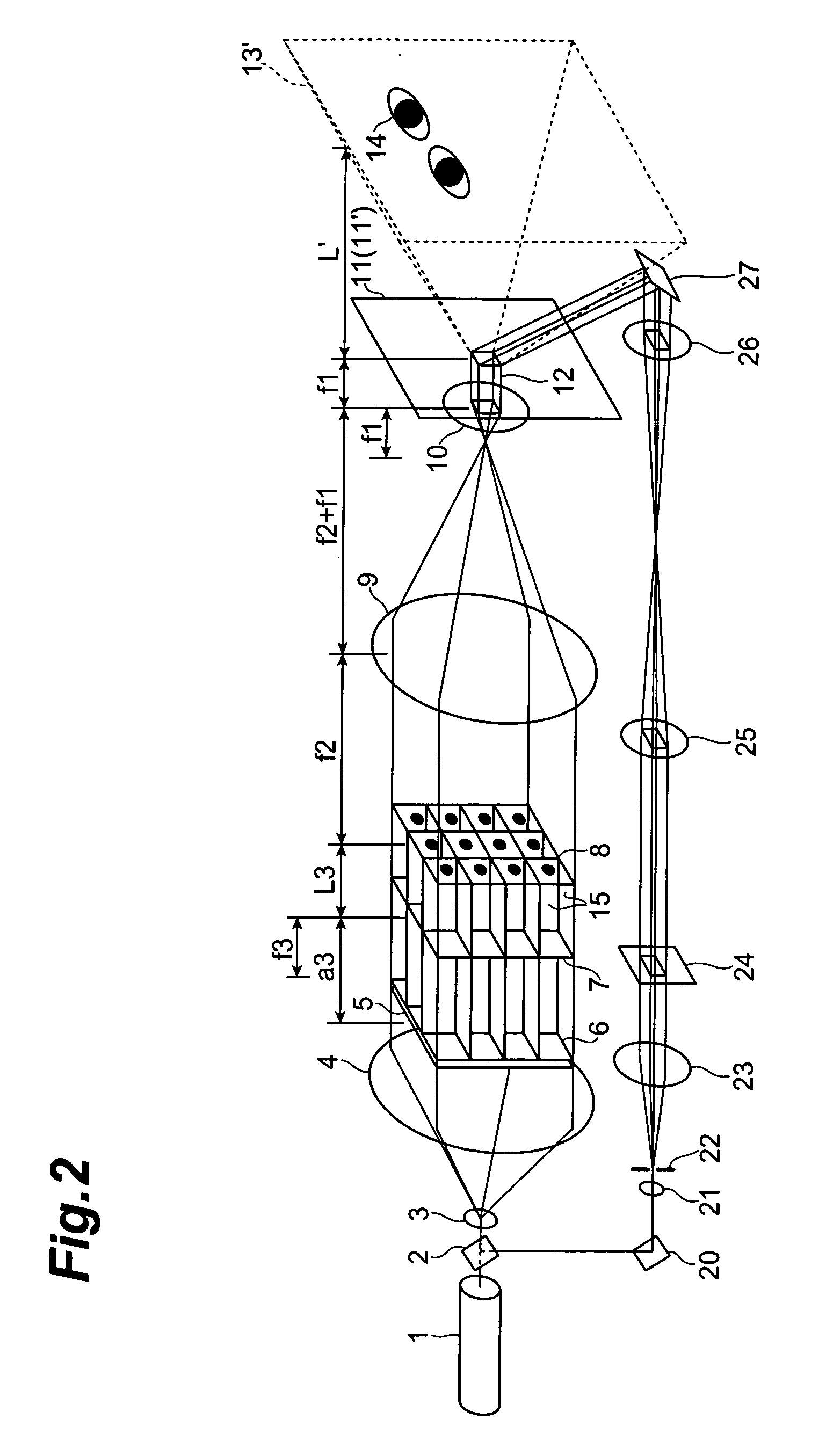Hologram preparing method
- Summary
- Abstract
- Description
- Claims
- Application Information
AI Technical Summary
Benefits of technology
Problems solved by technology
Method used
Image
Examples
first embodiment
FIG. 1 is a drawing for illustrating an apparatus for producing holograms. In this apparatus, a plurality of images are displayed in a matrix-like configuration on a spatial optical modulating element 6; after each of the images is condensed by a lens array, which comprises a plurality of lenses corresponding to the respective images, each image is reduced and focused by an aforcal optical system; and projected onto a photosensitive material 11 and recorded thereon. An image on the spatial optical modulating element 6 is formed as a virtual image, and the observing point is located at the position of the virtual image, or in a range from the position of the virtual image to the photosensitive material.
This apparatus is provided with a laser light source 1 that emits laser light of a single wavelength and a half mirror 2 that branches the laser light output from the laser light source 1. The laser light, which has been branched by the half mirror 2, go through (i) an object light i...
second embodiment
FIG. 2 is a drawing for illustrating an apparatus for producing holograms. In this apparatus, a plurality of images are displayed in a matrix-like configuration on a spatial optical modulating element 6; after each of the images is condensed by a lens array, which comprises a plurality of lenses corresponding to the respective images, each image is reduced and focused by a aforcal optical system; and be made to irradiate a photosensitive material 11 and recorded thereon. An image on the spatial optical modulating element 6 is formed as a real image, the observing point is located at the position of the real image, or within a range from the position of the real image to the photosensitive material.
This apparatus is the same as that in accordance with the first embodiment excepting the point that the spatial optical modulating element 6 is disposed closer to the laser light source 1 than the front-side focal position of the lens array 7. In this embodiment also, in the same steps a...
third embodiment
FIG. 3 is a drawing for illustrating an apparatus for producing holograms, which is equipped with an optical system that illuminates spatial optical modulating element with a diffusion surface light source. Different points between the third embodiment and the first embodiment are as described below. That is, the diffusing plate 5 is eliminated; the beam from laser light source 1 is expanded by the lens 3 and is made to irradiate the diffusing plate 5,thereby a diffusion surface light source 17 is activated as a new light source; and by the lens 4 and the lens array 7, which are tandem-disposed, the diffusion surface light source 17 are multi-focused on the front-side focal plane 8 of the lens 9. The optical disposition other than the above is the same as that of the first embodiment.
First, the optical system that focuses the diffusion surface light source with an aforcal optical system, which is equivalent to a particular case of a tandem lens optical system, will be described.
...
PUM
 Login to View More
Login to View More Abstract
Description
Claims
Application Information
 Login to View More
Login to View More - R&D
- Intellectual Property
- Life Sciences
- Materials
- Tech Scout
- Unparalleled Data Quality
- Higher Quality Content
- 60% Fewer Hallucinations
Browse by: Latest US Patents, China's latest patents, Technical Efficacy Thesaurus, Application Domain, Technology Topic, Popular Technical Reports.
© 2025 PatSnap. All rights reserved.Legal|Privacy policy|Modern Slavery Act Transparency Statement|Sitemap|About US| Contact US: help@patsnap.com



